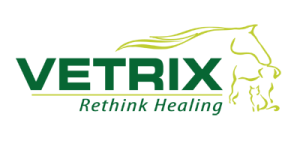Thanksgiving is only a few days around the corner, which usually results in an uptick in vet visits. There’s nothing wrong with sharing food and celebrating Thanksgiving with your dog, as long as you remember that your fur babies rely on you to keep them safe. Before you give in to the puppy dog eyes peering at you from under the table this year, take some time to ensure that you understand what your dog can and can’t eat at Thanksgiving dinner.

4 Safe and Healthy Foods Your Dog Can Eat for Thanksgiving Dinner
- Skinless, white turkey meat. White Turkey meat–without bones–is a delicious dinner staple your dog will love, and it’s high in protein and low in fat. It’s best to avoid fatty snacks, so ensure that the turkey you share with your pet is turkey skin and gravy free. Fatty foods can overstimulate and inflame the pancreas, resulting in a life-threatening situation. Avoiding fatty foods is especially important to remember if you’re the proud owner of a Yorkshire Terrier, Miniature Schnauzer, or a Cocker Spaniel.
- Pumpkin. Pumpkin is a super healthy dog snack that’s also great for your pup’s skin and coat. Sugar-free canned pumpkin is safe to share with your pet, so feel free to place a dollop in Fido’s food bowl.
- Vegetables: Green beans, sweet potatoes, carrots, and broccoli. Most veggies are a great low-calorie snack choice for dogs. Raw green beans are full of iron and provide a satisfying crunch. A few chopped cubes of sweet potatoes are great for your dog’s digestive health.
- Apple Slices. Setting aside a few seed-free apple slices before baking your pie is a great way to spoil your dog while keeping them safe on Turkey Day. Apple slices are full of Vitamins A and C and are also a decent fiber source.
Please note that as long as your dog has no food allergies, it’s safe to feed them small amounts of the foods listed above. You know your pet best.
4 Foods Your Dog Can’t Eat at Thanksgiving Dinner
- Turkey bones. We said it once, and we’ll repeat it: Do not feed your dog turkey bones. We know it’s tempting, but the bones can potentially harm your pet’s digestive tract, and the American Veterinary Medical Association (AVMA) says it’s best to avoid it.
- Turkey dressing/Stuffing. Both options almost always contain onions and garlic, which are toxic for pets. It’s not worth the risk.
- Mashed potatoes. Everyone loves a healthy of mashed potatoes on the side during Thanksgiving dinner, but this side dish is a food your dog can’t enjoy with you. Mashed potatoes are often packed with butter and cream, which can cause diarrhea in dogs.
- Xylitol-containing products. Xylitol is often found in marshmallows, so if you’re thinking about sharing sweet potatoes with your fur baby, make sure you do so before the marshmallows or brown sugar is added to the dish (sugar isn’t good for your dog either).
Keep Your Dog Safe on Thanksgiving
If you’re hosting Dinner this year, remember to advise family and other guests on what they can and can’t feed your dog for Thanksgiving dinner. Keep an eye on your pets and follow the list of can and can’t share from above, and you’ll be well on your way to a memorable Thanksgiving holiday. For more information on Thanksgiving and how to keep your pet safe through the holidays, we recommend reading this article from the AVMA: Thanksgiving Pet Safety.
Vetrix is the leading provider of veterinary regenerative medicine, and we can help your practice thrive! To learn more, get in touch with us today.

